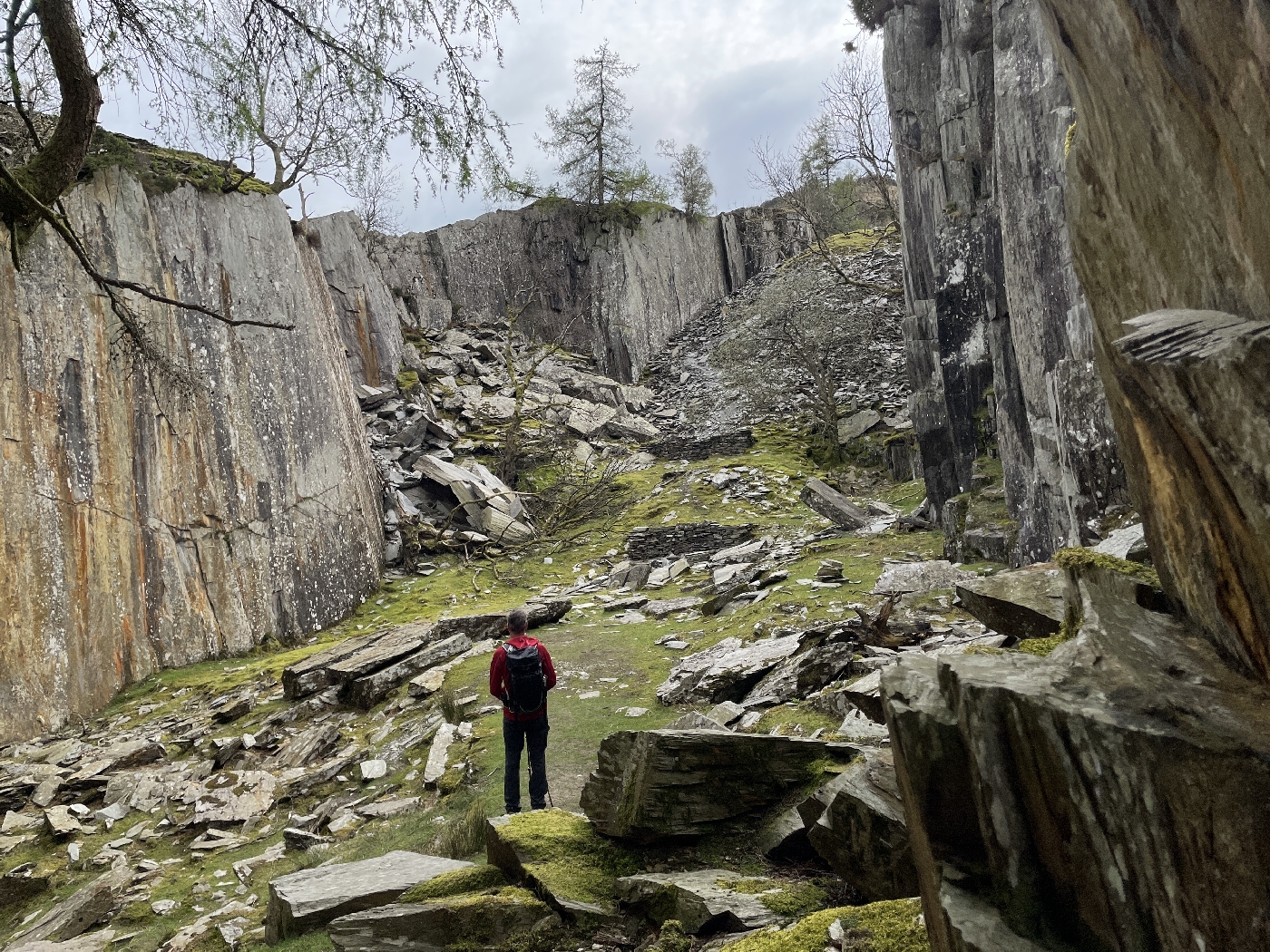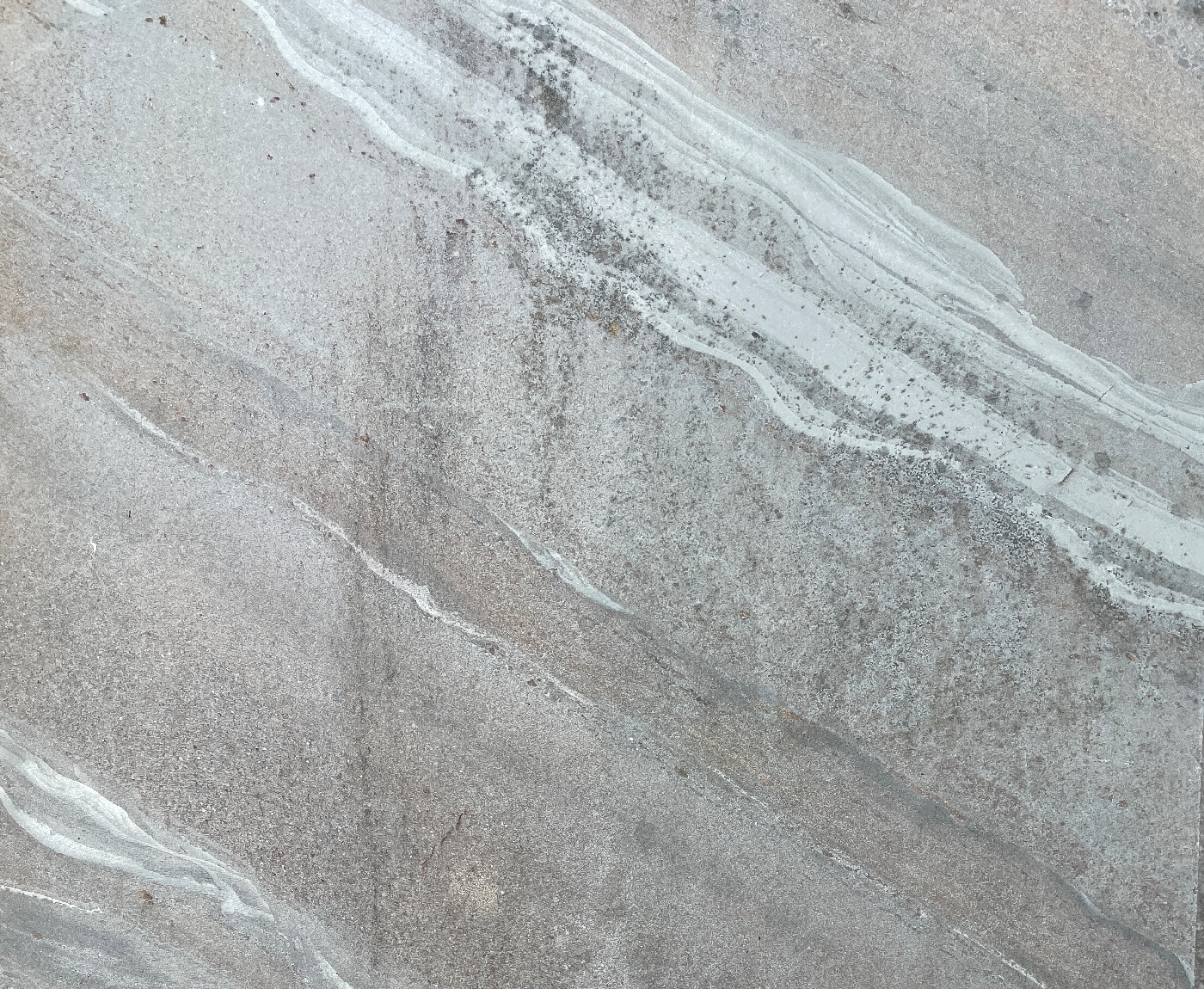23 Tilberthwaite
Theme: Volcanoes and molten rock
Location
23 Tilberthwaite — cleavage, sediment deformation and faulting in green slates —. Lots of parking beside the old quarries
Description
There used to be hundreds of mines and quarries in the Lake District. The little valley of Tilberthwaite was home to copper mines and slate quarries but only one small one is still working slate today.
The beautiful green slates you see on Lake District roofs, but more often nowadays as table mats and name plates, are rocks with a complicated story. The fact that they are included in a set of rocks known as the
There is another complication with slates; the flat surface of a roofing slate is not the original horizontal “bedding” surface when this was mud and volcanic debris around 450 million years ago. The rock suffered huge pressures within the Earth for millions of years afterwards and in response the particles were flattened at a completely different angle. It is this “pressured” surface, called cleavage, along which the slate naturally splits.
The vast 18th and 19th century roofing slate industry has gone and green slate is now the basis for a more select business: high value home and garden products which grace shop windows in Ambleside, Keswick and Grasmere. But you don’t have to buy to see green slate, just look down; some of the most beautiful examples which tell the stories of their origin make up the paths you walk along and the walls beside you.



